
One Month in Senegal and Hard Travel to Cape Verde
Vixen arrived two days ago in Cape Verde on the island of Santiago. We have been sailing on the Casamance River in southern Senegal for the last three weeks. Ten or fifteen years ago this area was a favorite cruising ground for French yachts but times have changed (mainly due to new visa requirements). Unbelievably, Vixen and our friends on Vega had the whole Casamance basin – which runs 30 miles from the Atlantic Ocean entrance to the city of Ziguanchor, plus miles and miles of navigable backwaters – all to ourselves.
So for three weeks we lazily drifted with the tides up and down the river deep into serpentine bayous visiting small African villages of a couple hundred to a couple of thousand people. The anchorages were great – 10 to 20 feet deep over sand with hurricane-hole protection among the mangroves. The bird life was spectacular: pelicans, hawks, herons, parrots and vultures. And lots of fish jumping in the river. One day we had the most enormous dolphins alongside while we motored downstream. They were the size of pilot whales.
The villages are either Catholic, Muslim or animist or a combination of the three. Usually you can find a cold beer and sometimes an intermittent internet connection. Most villages have no cars or paved roads because they are on islands in the river. There are solar panels for basic electrical needs. The people here are Diola while those from the north are Wolof. Sometimes a Gambian will be visiting friends and speak some English but otherwise French is spoken everywhere.
We were on the river during the rice harvest. In the morning the women of the village would paddle by Vixen on their way to the rice paddies. In the afternoon the dugouts would come back laden with rice.
At the end of our stay we rode the tide eight miles up a side estuary from Karabane to Ehid. We had been told to stop at the thread-bare naval base at Elenkine to check in with the officials there. I obediently anchored then rowed ashore to talk to one of the officers. He seemed to appreciate the gesture and simply waved us on without looking at any papers.
Elenkine is an interesting town because it is where the fishermen come to dry fish and truck it inland. For this reason there are lots of wooden pirogues in the anchorage and being built on the beach. The pirogues are big here – up to 60 feet long and carry some serious cargo. I watched one boat builder ripping a plank from an inch-and-a-half thick hardwood board that was about 15 feet long. There were actually two guys sawing away from either end with simple rip saws. I asked one of them in French how long it would take to cut one plank. “Oh, about five hours,” he said without much concern.
The boats are roughly built but very distinctive with jutting stems, long graceful sheerlines and colorful paint jobs. There is almost no working sailing vessels in Senegal; they all seem to have large diesels – surprising when the price of diesel is about $2 a liter. Because the planks are so roughly fit together they fill the gaps with tar and then tack a piece of rubberized canvas over all the seams on the inside of the hull.
We continued on to Ehid most of the time appearing to sail over dry land on my electronic chart. The river is basically uncharted as far as I can tell. Fortunately, a French sailor in Dakar had given me some waypoints taken during a previous visit that allowed us to avoid the sandbars.
The village of Ehid is known as a sacred village and central to the animist culture. There are fetishes everywhere: pig's jaws or shells hanging from trees or clumps of knotted grass. They believe that these things are watching over them and they pray or ask favors of the fetishes.
The village is built of mud-wall houses with tin roofs. There are large baobab trees and banyan trees that look to be hundreds of years old. People have marked off their little huts with sticks driven into the sand to form fences which line the footpaths. The center of every hut has a master's chamber and in this room is a pantry in which the family's rice is secured under lock and key.
One night we joined a party on the beach around a bonfire. There was drumming and dancing and a pot of freshly fermented palm wine. The main food here is rice and fish but there are also oysters which grow on the mangroves. They chop off a mangrove root covered in oysters then throw it on the fire. In fifteen minutes you have smoked oysters on a stick! I asked someone about the sustainability of chopping the mangroves and was told that that only happens occasionally. Usually the oysters are scraped off the roots to preserve the mangroves. There is an understanding that the mangroves are necessary for juvenile fish to mature.
In this rural environment, with almost no schedule, day after day seemed to slip by on Vixen. I started to sort out who was related to who in the village. We would see a friend we knew from one village at another further up the river. There seems to be lots of back and forth travel by pirogue. We gave away lots of kids clothes and stuff we didn't need on Vixen. Unfortunately, after one month our cruising permit was expired so we checked out and prepared for the 450 mile trip to Cape Verde.
The Casamance river entrance is well marked but it has a few curves and would be difficult maneuver under sail alone. We picked our tide to ride out to the sea with the current. The final turn to the open ocean, however, turned against the tide and the prevailing winds and waves from the north. We had three miles to motor into ocean swells and about twenty knots of wind. Vixen crept forward.
I started thinking about my Perkins engine and where any weakness might be found. To loose power at that moment would be a disaster. There wasn't room to sail upwind in the narrow channel with sandbars and breaking seas on either side. There was also no one to call for help on the radio. I hate to think what our fate would have been if the motor had quit at that moment.
But the old Perkins chugged on and we reached the open sea. Finally we could fall off the wind and set sail. For the next 50 miles there were fishermen in open boats setting nets over the shallow bank off the coast of Senegal. I dodged them as best I could but sometimes in the darkness had to run between two flags marking a net. It reminded me of sailing in Indonesia where the only sign your about to run into a fishing boat is a frantic flashlight flicking up and down. The appropriate response seems to be to have your own flashlight and flick it up and down then turn to port or starboard and see if the flicking becomes more or less frantic.
To get to Cape Verde we knew we would have the wind forward of the beam so it wasn't to be a downwind cakewalk. We were prepared, if the wind shifted west and strengthened, to skip Cape Verde and sail all the way across the Atlantic without stopping. For the first day we had the predicted 18 knots of wind from the northeast. Solianna and I sat in the cockpit and sucked on baobab seeds fresh from the tree. Then on our second day out I called a container ship that was on a collision course with us and asked if he would mind altering course to port to avoid Vixen. The captain politely agreed.
Then ten minutes later he called us: “You are very brave,” he said in an eastern European accent.
I thought about that for a minute and then called him back: “Ah... what do you mean we are very brave?”
“Well. I've just looked at the 12 hour forecast and this swell is going to increase and the wind will get very strong. Very brave.”
“Very brave or very stupid,” I thought to myself. There had been no indication of a coming gale on the weather information I had downloaded a day earlier. But sure enough that night, after Tiffany and I put a second reef in Vixen's main, the wind blew and mountainous waves pummeled Vixen. Normally, I would have hove-to in these conditions and waited it out but as I didn't know when the storm would abate I decided to try to reach the shelter of Cape Verde. After two days of getting hammered by the elements there was a lull and on the fourth day out we reached the harbor of Praia.
We reached shelter just in time because the next day the wind and rain came on stronger than ever. The whole city of Praia was submerged in a torrent of brown water. Everybody said it was very unusual weather. Vixen was caked in salt water and the red dust of the Sahara desert born by the wind. I told Solianna and Seffa, “If you take a lick of that you can say you've eaten sand from the Sahara dessert.” Seffa looked hesitantly at Solianna to see if I was joking and then they both took a salty lick of the pin rail. On Vixen we were just happy to be safely anchored and not getting tossed around on the open ocean.
Vixen arrived two days ago in Cape Verde on the island of Santiago. We have been sailing on the Casamance River in southern Senegal for the last three weeks. Ten or fifteen years ago this area was a favorite cruising ground for French yachts but times have changed (mainly due to new visa requirements). Unbelievably, Vixen and our friends on Vega had the whole Casamance basin – which runs 30 miles from the Atlantic Ocean entrance to the city of Ziguanchor, plus miles and miles of navigable backwaters – all to ourselves.
So for three weeks we lazily drifted with the tides up and down the river deep into serpentine bayous visiting small African villages of a couple hundred to a couple of thousand people. The anchorages were great – 10 to 20 feet deep over sand with hurricane-hole protection among the mangroves. The bird life was spectacular: pelicans, hawks, herons, parrots and vultures. And lots of fish jumping in the river. One day we had the most enormous dolphins alongside while we motored downstream. They were the size of pilot whales.
The villages are either Catholic, Muslim or animist or a combination of the three. Usually you can find a cold beer and sometimes an intermittent internet connection. Most villages have no cars or paved roads because they are on islands in the river. There are solar panels for basic electrical needs. The people here are Diola while those from the north are Wolof. Sometimes a Gambian will be visiting friends and speak some English but otherwise French is spoken everywhere.
We were on the river during the rice harvest. In the morning the women of the village would paddle by Vixen on their way to the rice paddies. In the afternoon the dugouts would come back laden with rice.
At the end of our stay we rode the tide eight miles up a side estuary from Karabane to Ehid. We had been told to stop at the thread-bare naval base at Elenkine to check in with the officials there. I obediently anchored then rowed ashore to talk to one of the officers. He seemed to appreciate the gesture and simply waved us on without looking at any papers.
Elenkine is an interesting town because it is where the fishermen come to dry fish and truck it inland. For this reason there are lots of wooden pirogues in the anchorage and being built on the beach. The pirogues are big here – up to 60 feet long and carry some serious cargo. I watched one boat builder ripping a plank from an inch-and-a-half thick hardwood board that was about 15 feet long. There were actually two guys sawing away from either end with simple rip saws. I asked one of them in French how long it would take to cut one plank. “Oh, about five hours,” he said without much concern.
The boats are roughly built but very distinctive with jutting stems, long graceful sheerlines and colorful paint jobs. There is almost no working sailing vessels in Senegal; they all seem to have large diesels – surprising when the price of diesel is about $2 a liter. Because the planks are so roughly fit together they fill the gaps with tar and then tack a piece of rubberized canvas over all the seams on the inside of the hull.
We continued on to Ehid most of the time appearing to sail over dry land on my electronic chart. The river is basically uncharted as far as I can tell. Fortunately, a French sailor in Dakar had given me some waypoints taken during a previous visit that allowed us to avoid the sandbars.
The village of Ehid is known as a sacred village and central to the animist culture. There are fetishes everywhere: pig's jaws or shells hanging from trees or clumps of knotted grass. They believe that these things are watching over them and they pray or ask favors of the fetishes.
The village is built of mud-wall houses with tin roofs. There are large baobab trees and banyan trees that look to be hundreds of years old. People have marked off their little huts with sticks driven into the sand to form fences which line the footpaths. The center of every hut has a master's chamber and in this room is a pantry in which the family's rice is secured under lock and key.
One night we joined a party on the beach around a bonfire. There was drumming and dancing and a pot of freshly fermented palm wine. The main food here is rice and fish but there are also oysters which grow on the mangroves. They chop off a mangrove root covered in oysters then throw it on the fire. In fifteen minutes you have smoked oysters on a stick! I asked someone about the sustainability of chopping the mangroves and was told that that only happens occasionally. Usually the oysters are scraped off the roots to preserve the mangroves. There is an understanding that the mangroves are necessary for juvenile fish to mature.
In this rural environment, with almost no schedule, day after day seemed to slip by on Vixen. I started to sort out who was related to who in the village. We would see a friend we knew from one village at another further up the river. There seems to be lots of back and forth travel by pirogue. We gave away lots of kids clothes and stuff we didn't need on Vixen. Unfortunately, after one month our cruising permit was expired so we checked out and prepared for the 450 mile trip to Cape Verde.
The Casamance river entrance is well marked but it has a few curves and would be difficult maneuver under sail alone. We picked our tide to ride out to the sea with the current. The final turn to the open ocean, however, turned against the tide and the prevailing winds and waves from the north. We had three miles to motor into ocean swells and about twenty knots of wind. Vixen crept forward.
I started thinking about my Perkins engine and where any weakness might be found. To loose power at that moment would be a disaster. There wasn't room to sail upwind in the narrow channel with sandbars and breaking seas on either side. There was also no one to call for help on the radio. I hate to think what our fate would have been if the motor had quit at that moment.
But the old Perkins chugged on and we reached the open sea. Finally we could fall off the wind and set sail. For the next 50 miles there were fishermen in open boats setting nets over the shallow bank off the coast of Senegal. I dodged them as best I could but sometimes in the darkness had to run between two flags marking a net. It reminded me of sailing in Indonesia where the only sign your about to run into a fishing boat is a frantic flashlight flicking up and down. The appropriate response seems to be to have your own flashlight and flick it up and down then turn to port or starboard and see if the flicking becomes more or less frantic.
To get to Cape Verde we knew we would have the wind forward of the beam so it wasn't to be a downwind cakewalk. We were prepared, if the wind shifted west and strengthened, to skip Cape Verde and sail all the way across the Atlantic without stopping. For the first day we had the predicted 18 knots of wind from the northeast. Solianna and I sat in the cockpit and sucked on baobab seeds fresh from the tree. Then on our second day out I called a container ship that was on a collision course with us and asked if he would mind altering course to port to avoid Vixen. The captain politely agreed.
Then ten minutes later he called us: “You are very brave,” he said in an eastern European accent.
I thought about that for a minute and then called him back: “Ah... what do you mean we are very brave?”
“Well. I've just looked at the 12 hour forecast and this swell is going to increase and the wind will get very strong. Very brave.”
“Very brave or very stupid,” I thought to myself. There had been no indication of a coming gale on the weather information I had downloaded a day earlier. But sure enough that night, after Tiffany and I put a second reef in Vixen's main, the wind blew and mountainous waves pummeled Vixen. Normally, I would have hove-to in these conditions and waited it out but as I didn't know when the storm would abate I decided to try to reach the shelter of Cape Verde. After two days of getting hammered by the elements there was a lull and on the fourth day out we reached the harbor of Praia.
We reached shelter just in time because the next day the wind and rain came on stronger than ever. The whole city of Praia was submerged in a torrent of brown water. Everybody said it was very unusual weather. Vixen was caked in salt water and the red dust of the Sahara desert born by the wind. I told Solianna and Seffa, “If you take a lick of that you can say you've eaten sand from the Sahara dessert.” Seffa looked hesitantly at Solianna to see if I was joking and then they both took a salty lick of the pin rail. On Vixen we were just happy to be safely anchored and not getting tossed around on the open ocean.
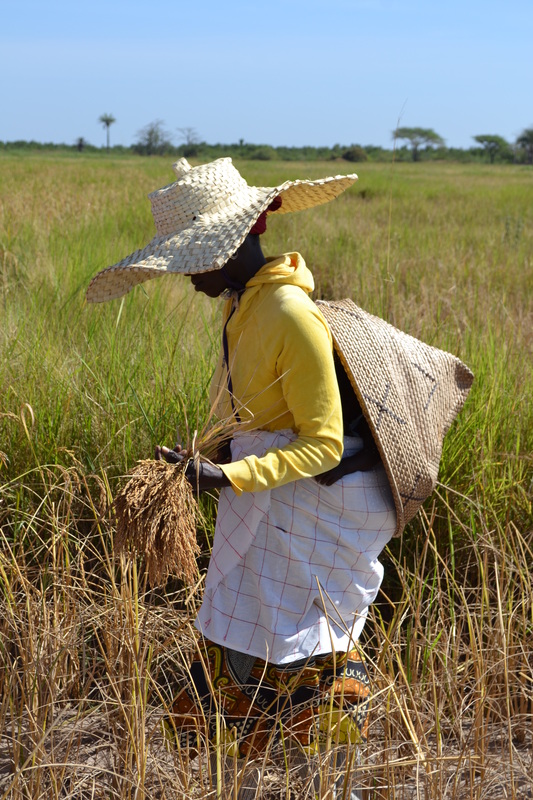

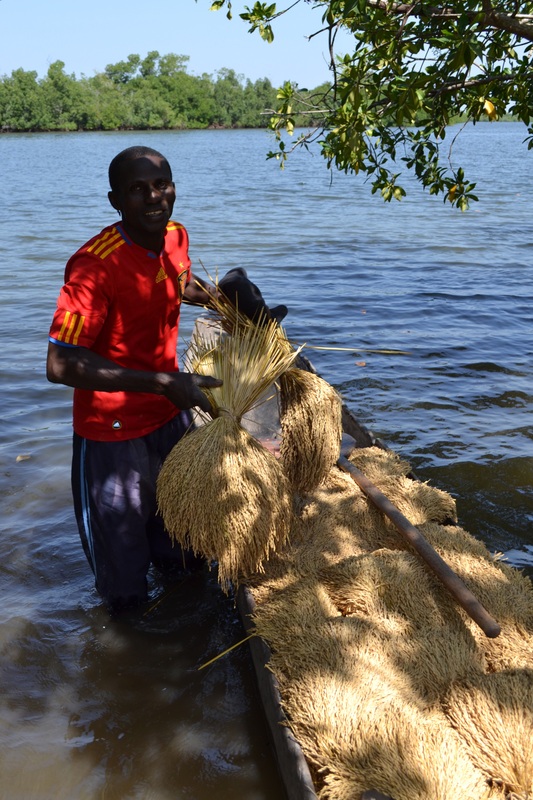
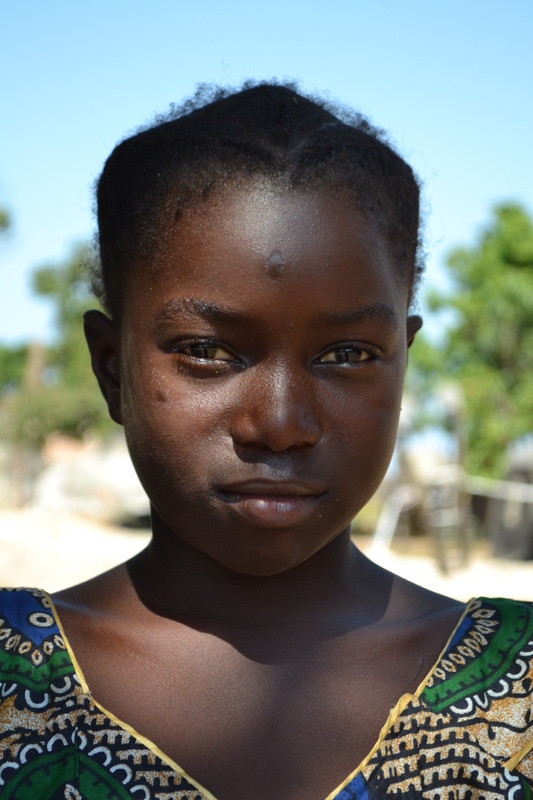
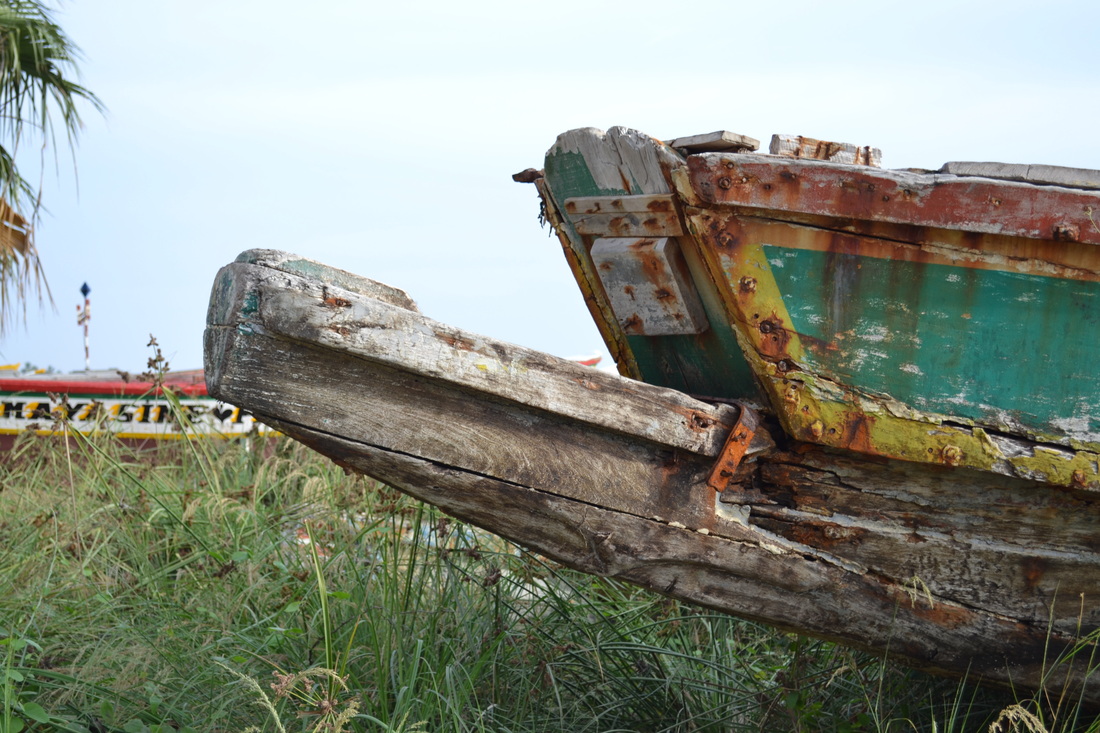

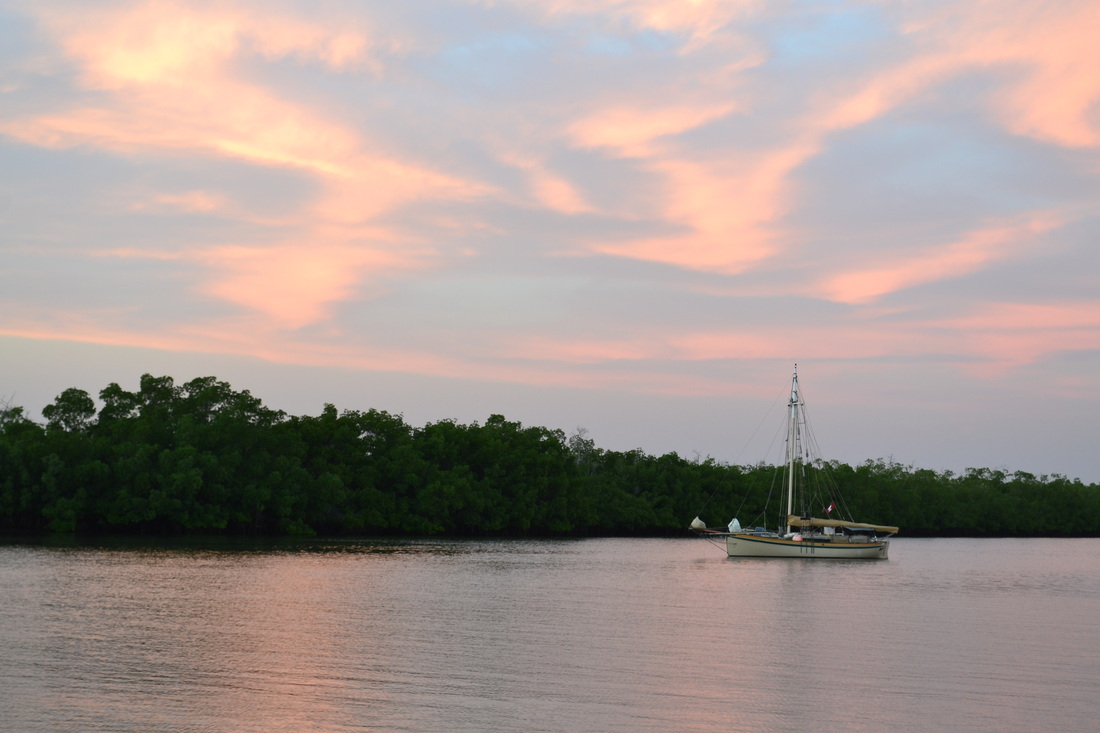

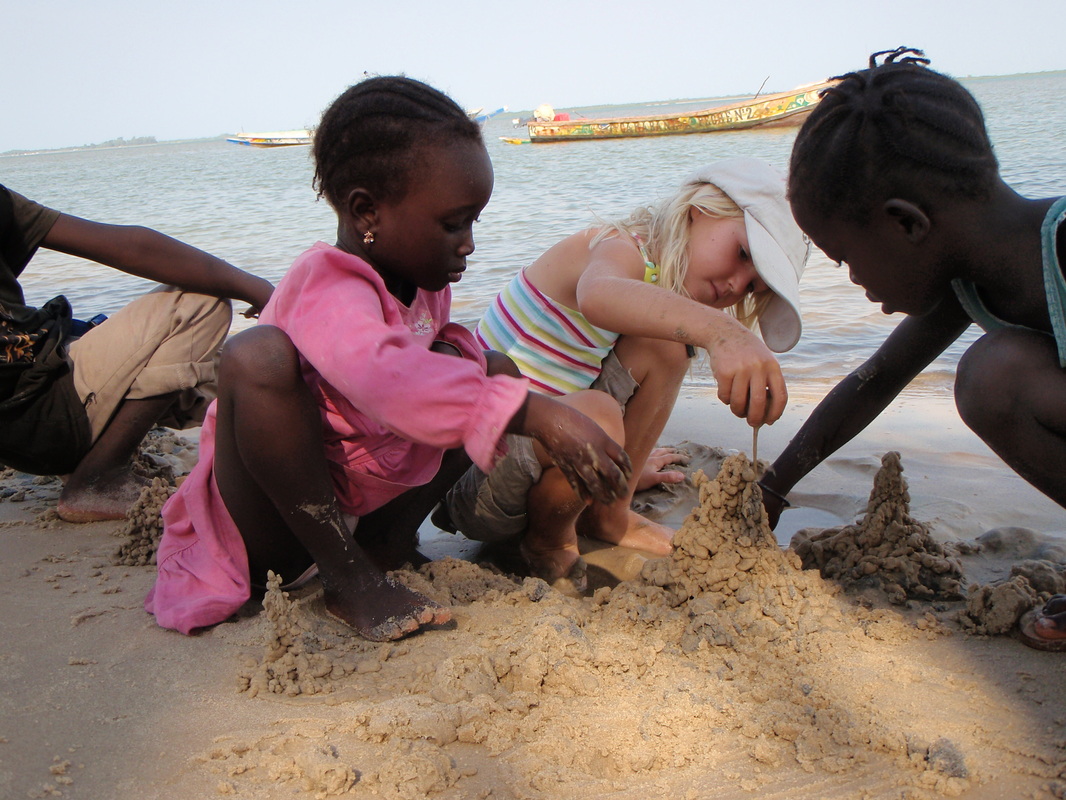
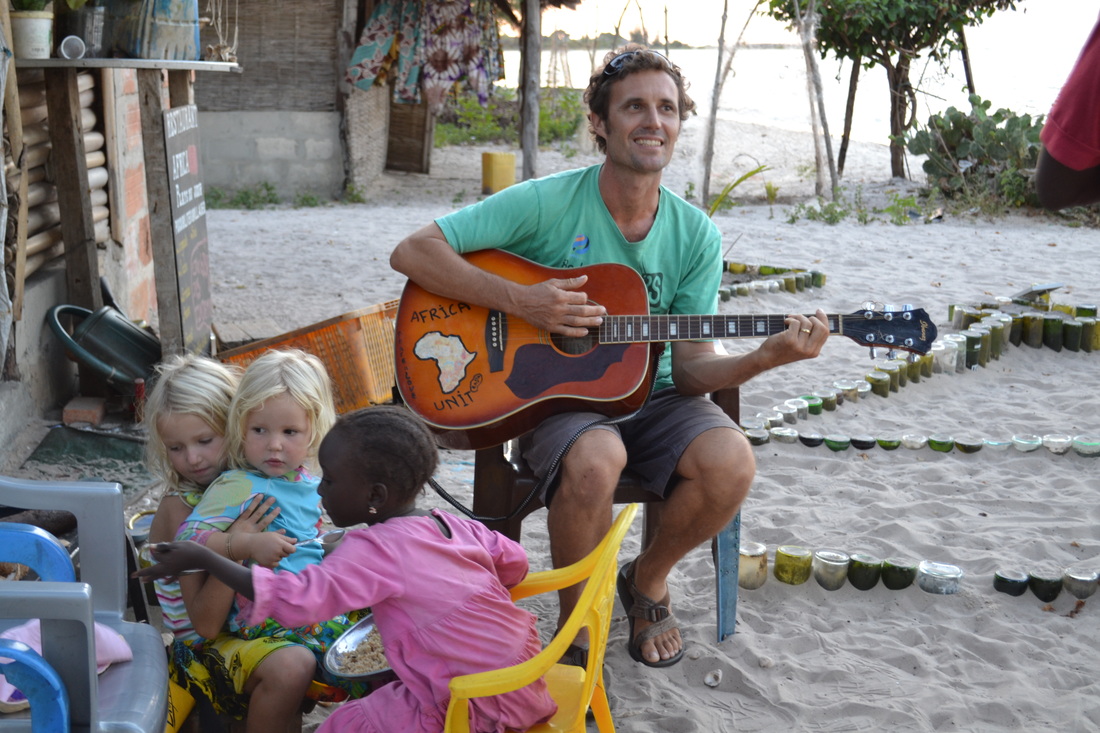


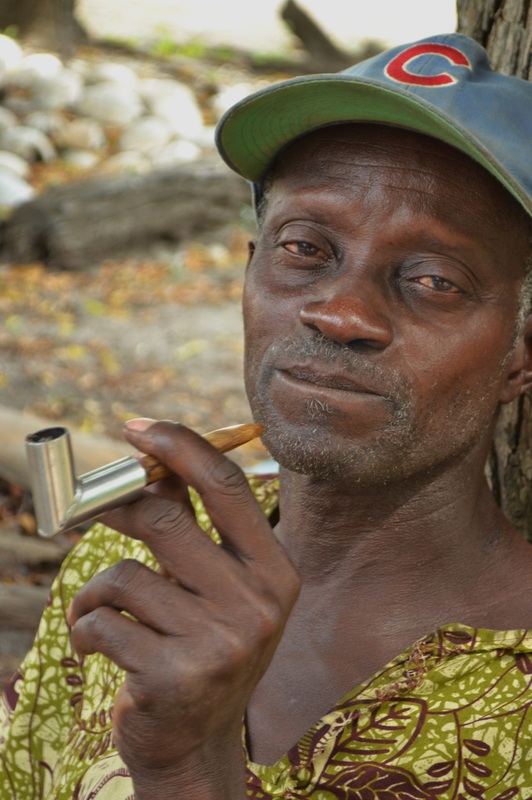
 RSS Feed
RSS Feed
